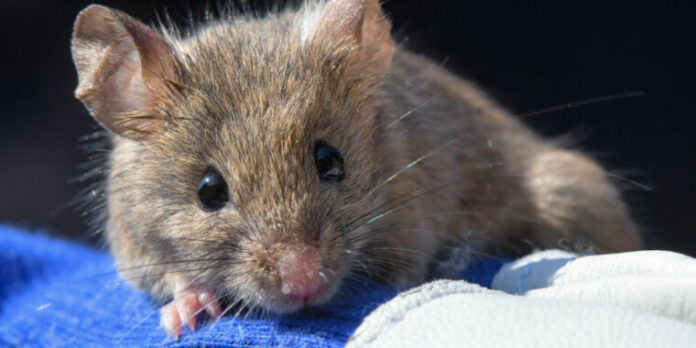You’re feeling sleepy —
It’s not yet clear whether these neurons function the same way in other mammals.

Enlarge / 11 September 2019, Brandenburg, Niederfinow: A house mouse (Mus musculus) is sitting on the glove of a biologist.
Animals that hibernate experience a huge number of amazing transformations. Metabolisms drop and get completely rewired so that they operate without food intake. Body temperatures and activity drop. Despite all these changes, animals remain somewhat functional—bears manage to give birth and nurse their cubs during their hibernation.
We have very little idea about how all of those transformations take place. This week, two different groups of researchers published papers that describe the neurons that control a similar state called torpor in mice. While mice don’t hibernate, these results suggest an obvious target to look at in mammals that do hibernate. And it raises the prospect that hibernation-like states might be available to all mammals—including us.
Torporific
While mice don’t undergo hibernation like some other species, they have a similar state called torpor. Torpor can be triggered by a combination of low temperatures and lack of food. There’s a significant overlap between it and hibernation, in that the mice’s body temperature and activity drop, as do respiration and heart rate. But, unlike hibernation, the periods of torpor are relatively brief, with the mice mixing in periods of aggressively searching for food.
Despite these differences, mice make a great way of studying the process, and not just because they’re easier to work with than bears. Over decades of research, we’ve developed a huge variety of tools that allow us to understand the genetics and physiology of mice at a detail that’s just not possible in other species. These tools are precisely what allowed the two groups to identify the neurons that control the entry into torpor.
The first team, working in Boston, started by inducing torpor in mice, then staining their brains for areas of high neural activity. Next, the researchers compared these to the areas lit up in mice that weren’t experiencing torpor. Mice, obviously, have no shortage of things going on in their brains regardless of whether they’re going into torpor—they’re cold and hungry, after all—and torpor probably requires a lot of brain activity to implement. So the researchers had to rely on a combination of the Allen Brain Atlas and machine learning to identify the specific regions that were different between torpored mice and controls. Even then, they ended up with 190 different regions.
Which are critical?
To find out which one of these 190 were critical, the researchers injected an engineered virus that carried a gene that would let them activate neurons with a drug. This would only infect cells near the site where the virus was injected. By injecting at different sites in a large collection of mice, the researchers created a set of partly overlapping brain areas that could be activated at will. By determining which of these mice would go into torpor in response to the drug, they could narrow down the site(s) that trigger torpor.
They came up with a region called the anterior hypothalamus, which had already been linked to the control of body temperature and energy use. Activating specific neurons in this region caused a dramatic drop in the the mouse’s activity and body temperature. Inactivating them disrupted the mouse’s ability to enter torpor even when kept hungry and cold.
Follow the genes
The second research group, based in Japan, went about things very differently. These researchers started with a protein that we didn’t even know existed until computer algorithms found it in the genome sequence. Early studies implicated it in food intake and anxiety, but the researchers were curious to learn more. So, they identified cells in the brain that produced the protein and started studying them.
The researchers engineered mice so that any cells that produced the protein would also produce the same drug-activated gene that the Boston research team used. This allowed them to activate the same neurons. Thirty minutes after receiving the drug, the mice dramatically reduced their activity, just as they would if they were entering torpor. As in the earlier study, there were a number of cells making the protein, so the researchers had to inject around a bit to identify the specific cells involved.
This team spent a bit of time characterizing the torpor state that could be induced by these cells. Mice normally have a body temperature over 40°C. Activating the cells caused it to drop below 30°C for over 48 hours. The heart rate decreased dramatically, and oxygen consumption went down as well. In fact, breathing became so shallow that the researchers weren’t able to detect it with the instruments they had.
So, while it wasn’t hibernation, it sure looked a lot like it.
Hibernation is actually widespread among mammals that aren’t necessarily closely related in evolutionary terms. This suggests that the differences between torpor and true hibernation may be more of a matter of degree than differences in the process that triggers them. It also suggests that animals that don’t display either—a group that includes us—might undergo a torpor-like process if these neurons are activated.
Nature, 2020. DOI: 10.1038/s41586-020-2387-5 and 10.1038/s41586-020-2163-6 (About DOIs).






